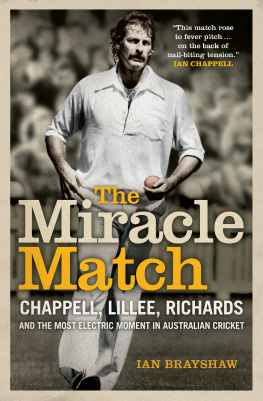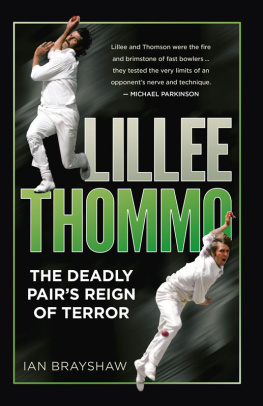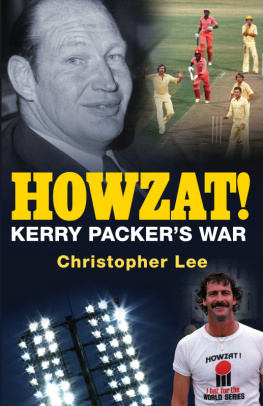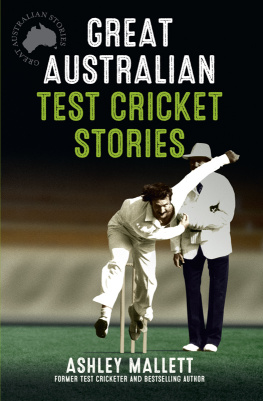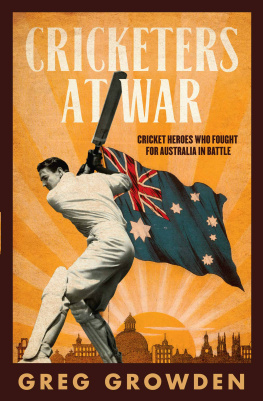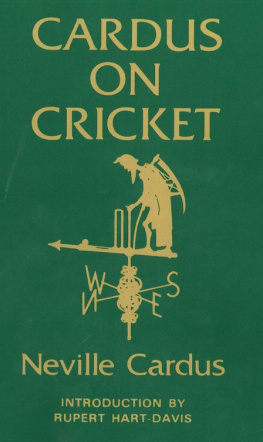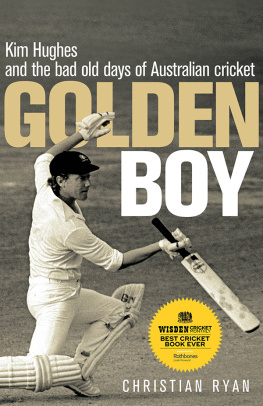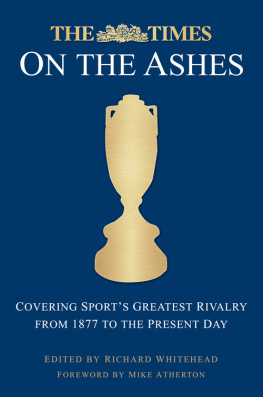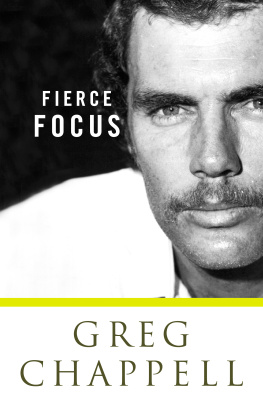Published in 2014 by Hardie Grant Books
Hardie Grant Books (Australia)
Ground Floor, Building 1
658 Church Street
Richmond, Victoria 3121
www.hardiegrant.com.au
Hardie Grant Books (UK)
5th & 6th Floor
5254 Southwark Street
London SE1 1RU
www.hardiegrant.co.uk
All rights reserved. No part of this publication may be reproduced, stored in a retrieval system or transmitted in any form by any means, electronic, mechanical, photocopying, recording or otherwise, without the prior written permission of the publishers and copyright holders.
The moral rights of the author have been asserted.
Copyright Ian Brayshaw
Cataloguing in publications data is available from the National
Library of Australia
The Miracle Match
eISBN 978 1 74358 285 5
Cover design by Luke Causby
Text design by Patrick Cannon
Cover photograph Newspix
To all who contributedbefore, during and afterto what was a truly amazing, unforgettable day.
Contents
M any interviews have been executed in the preparation of this book. In the interests of recognition, when an individual is quoted, here is the list of the personnel involved with the game:
Queensland playersGreg (Tears) Chappell (captain), John (OGO) Maclean (vice-captain), Viv (Smoky) Richards, Alan (Jonesey) Jones, David (Rags) Ogilvie, Phil (Port) Carlson, Jeff (Jilbert) Langley, Graham (Grimace) Whyte, Jeff (Two-Up) Thomson, Denis (Louie) Schuller, Geoff (Mary) Dymock and Malcolm (Mal) Francke (12th man)
Western Australia playersRod (Bacchus) Marsh (captain), Dennis (FOT) Lillee (vice-captain), Bruce (Stumpy) Laird, Ric (Grumpy) Charlesworth, Rob (Tables) Langer, Kim (Clag) Hughes, Craig (Sarge) Serjeant, Ian (Sticks) Brayshaw, Bruce (Roo) Yardley, Mick (Sos) Malone, Wayne (Dunny) Clark and Bob (Cocky) Paulsen (12th man)
UmpiresGary Duperouzel and Don Hawks
Western Australia team squad co-ordinatorDaryl Foster
Western Australia selectorsAllan Edwards and Lawrie Sawle
Channel 9 commentatorsRichie Benaud, Bob Simpson, Bill Lawry and Ian Chappell
When you pulled your spike through to make your mark it was almost slippery.Western Australia opening batsman Ric Charlesworth, on marking his guard on the controversial WACA Ground greentop.
I sensed that for us to win, Viv and I would have to get the bulk of the runs.Greg Chappell before the run chase, knowing that Dennis Lillee would be fired up on a lightning-fast wicket.
Theres a big crowd here. Lets not let them down. Lets make em fight for it.Rod Marsh to his team, before going out to defend the Western Australian total.
Make em fight for it, be buggered. Were going to beat these bastards!Dennis Lillee, before going out to spearhead the Western Australia bowling attack.
Poor old John Maclean. He survived Dennis Lillee, but he couldnt survive Denis Schuller!Bill Lawry, television commentator, after Denis Schuller had run out his vice-captain.
If WA can win this, it will be one of the great results in Australian cricket.Richie Benaud, television commentator.
Do I remember that game? Its never far from the mind, man!West Indies great Sir Vivian Richards, who opened the batting for Queensland.
A classic showdown
W hen it comes to swagger and oozing outward self-confidence, there have been few in world cricket to equal Viv Richards. His act simply begged the bowler to bring it on, man. And so often did the best in the business try to do just that, only to find who the master really was.
One of those rare moments when Viv Richards was fully put to the test was during an extraordinary limited-overs match that took place at the Western Australian Cricket Association (WACA) Ground in Perth in 1976. Twelve months earlier, a twenty-three-year-old Richards had set the same ground alight with a blazing 175 for the West Indies against Western Australia (WA)an innings that included some amazing power hitting. Now he was back, this time playing for Queensland in a brief invitation stint, and well on the way to being recognised as one of the finest batsmen of all time.
It was the Gillette Cup domestic one-day cricket tournament semifinal, and when Richards walked out to face the first ball, he was confident he could dominate his opponents the same way he had a year before, and run down a paltry run chase on his own. The home side desperately needed to find a way to take the swagger out of the Master Blaster if they were to have a chance.
At that time there was arguably only one man, not just in WA, or even Australia, but the entire cricketing world, who possessed the ability and the inspiration to take on the challenge. And as Viv casually reached the middle to take the first ball, he was measuring out his run at the River End: Dennis Lillee.
Preparing to tackle a cricketing version of Mission: Impossible, Lillee charged in to impose his will on a grim situation for his team, and take on Richards head to head. What would follow is one of the most amazing beginnings to an innings in any form of cricketin a game that would come to be remembered as The Miracle Match.
The short form
I f there are intrinsicdare we say it, old-fashionedvalues in four- and five-day cricket, then the short form in its 40 years of existence has provided a distinctly different beat. Like switching from a Mozart concerto to Queen hammering out We will rock you!a nice cosy room, comfy slippers and a cardigan versus a thumping music arena with speakers blaring and the blood pulsating. The limited-overs game was introduced in English County cricket in 1963 as a potential saviour for flagging clubs finances, and the Gillette Cup tournament was established. The Cup was soon introduced in Australia too, and it was a runaway success. At least in the medium term. In both countries there have been several name changes since, but the immediacy of the one-day format introduced new life and vigour to the game, attracting a new audiencewomen and children. And sending the turnstiles whirling.
In the prime of limited-overs cricket in England, there were as many as three competitions. While the popularity of the game increased, however, concerns were expressed that this hit-and-giggle game would be the end of crickets dyed-in-the-wool adherence to technique. And there was merit in the concern. The pressure to score quickly encouraged batsmen to contradict the norms in pursuit of penetrating a gap in the fieldof making runs in a hurry. In those days there was nothing to prevent a captain placing all of his fieldsmen on the boundary in an attempt to stem the flow of runs. In one particular game, an English captain even had his keeper on the boundary. The great Barry Richards once told me that, playing one-dayers for Hampshire in the County competition, to score a boundary hed been forced to develop a new shot to the defensive pace bowler: glide the ball just wide of the wicketkeeper and just fine of the third man. Victory was so important!
The first One Day International game (ODI) was played at the Melbourne Cricket Ground (MCG) on 5 January 1971an idea put into play after the Third Test at that ground between Australia and England had been abandoned without a ball being bowled. However, the short form really hit the international stage in 1972, with the scheduling of three games between England and Australia as part of the Ashes tour of England. Three years later, the first of the World Cup tournaments (of 60 overs) was staged in Englandwhen the West Indies scored a narrow victory over Australia in a final played before a lockout crowd at Lords.

